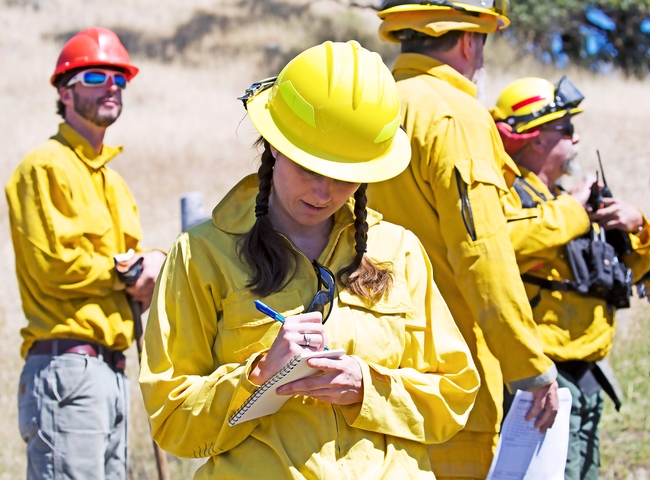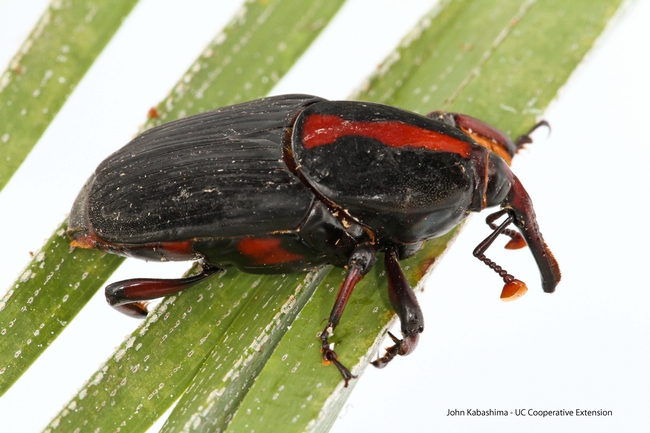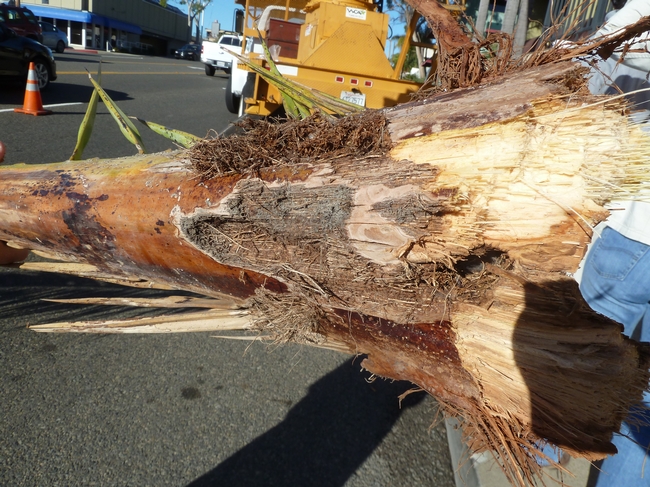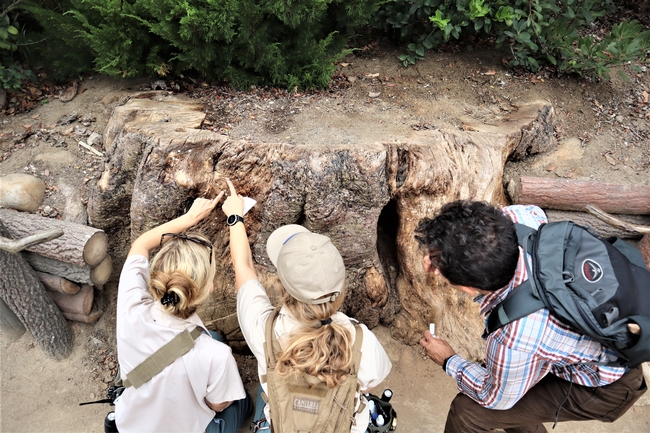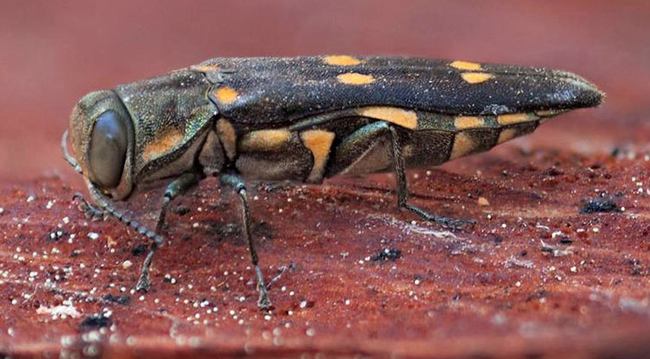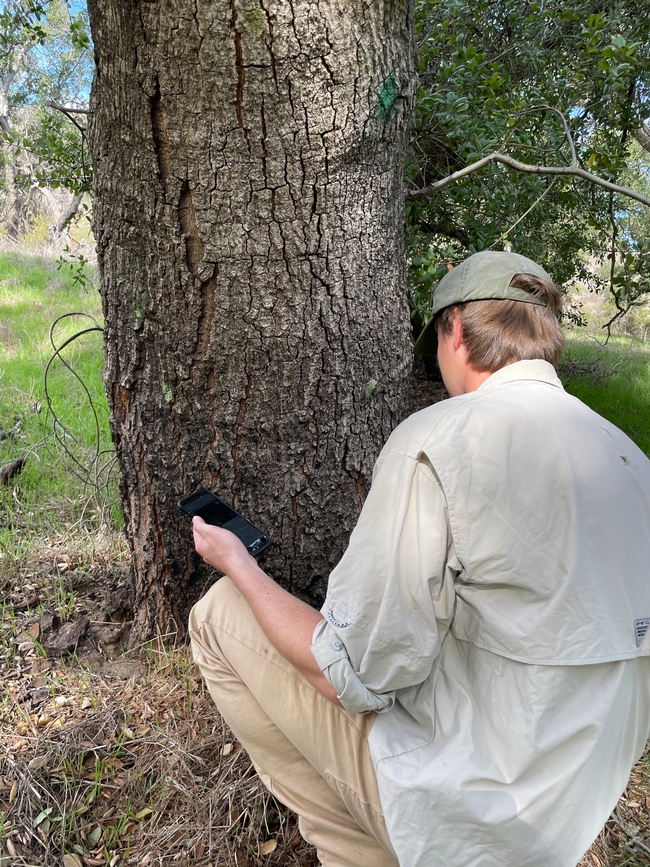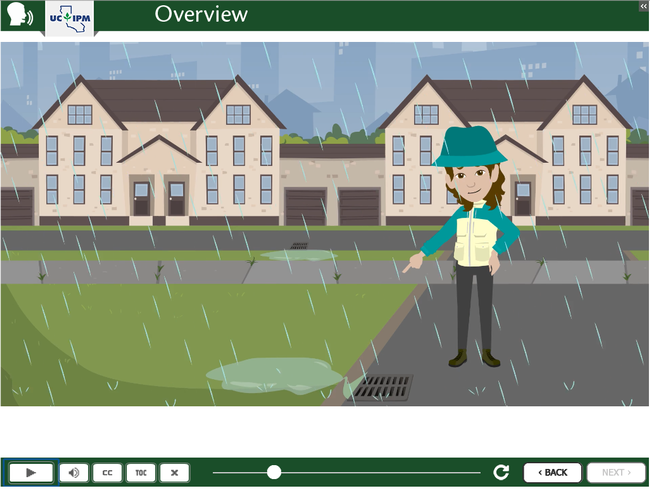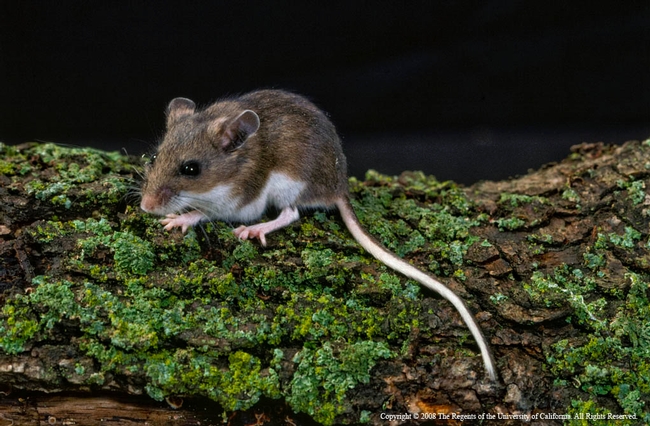Posts Tagged: statewide
UCCE seeks statewide input to develop future wildfire programs
University of California Cooperative Extension has recently expanded their team of fire advisors and staff. This new group of UCCE fire professionals is interested in learning about the concerns of the communities that UCCE serves, as well as the natural resource professionals already working to address these issues.
Results from this survey will enhance the team's ability to partner with residents, landowners, agencies, academics, and other organizations to reduce California's vulnerability to wildfires. These new advisors will also share survey results with UCCE colleagues throughout the state, who already provide important fire-related programming across diverse landscapes and audiences.
"Wildfires will continue to affect all Californians, either directly or indirectly," said Katie Low, UCCE statewide fire coordinator. "It's invaluable to have the input of as many people as possible to guide the development of our wildfire-related extension programs, so that they can provide the most useful resources and information to communities across California."
The survey asks questions about topics such as:
- Gaps within existing educational programming and resources
- Challenges community members are facing in addressing wildfire risk
- Empowerment of communities to make property management decisions and prepare for wildfire
- Acceptability of prescribed fire and other fuels treatments
By participating in this study, you can choose to enter a drawing to win one of fifty $20 VISA gift cards.
To take the online survey, please visit https://bit.ly/UCCE_Fire_Survey.
This research is being led by a team of new UCCE fire advisors and staff. If you have any questions about this survey, please contact the fire/forestry professionals involved in this survey effort:
- Luca Carmignani, UCCE fire advisor for Los Angeles, Orange, Riverside, and San Diego counties, carmignani@ucanr.edu
- Alison Deak, UCCE fire advisor for Fresno, Madera, and Mariposa counties, aldeak@ucanr.edu
- Katie Low, UCCE fire academic coordinator for Nevada and Placer counties, katlow@ucanr.edu
- Barb Satink Wolfson, UCCE fire advisor for Monterey, San Benito, Santa Clara, and Santa Cruz counties, bsatinkwolfson@ucanr.edu
- Ryan Tompkins, UCCE forestry advisor for Plumas, Sierra, and Lassen counties, retompkins@ucanr.edu
For more information about wildfire-related programming from University of California Cooperative Extension, please visit https://ucanr.edu/sites/fire/ or the Facebook page https://bit.ly/fireSolutions.
Invasive pests kill thousands of trees, but scientists see some successes
Early detection increases the chances of eradicating pests
Trees provide shade to keep us cool, produce oxygen for us to breathe and calm our nerves. Numerous studies have demonstrated that even brief contact with trees and green spaces can provide significant human health benefits such as reductions in blood pressure and stress-related hormones. Trees also reduce noise and visual pollution, help manage storm water runoff, reduce erosion and provide habitat for birds and wildlife. Trees naturally capture carbon, helping to offset the forces of climate change. They also increase the value of our properties and communities. In short, trees are essential to our well-being.
Unfortunately, invasive pests pose an ongoing threat to California's forests in both urban and wildland settings. Invasive insects such as goldspotted oak borer and invasive shothole borers have killed hundreds of thousands of trees in Southern California and are continuing to spread. Meanwhile, other pests and diseases such as Mediterranean oak borer and sudden oak death are killing trees in Northern California.
While the situation may sound dire, it is not hopeless. Of course, the best way to stop invasive pests is to prevent them from entering the state, as the California Department of Food and Agriculture has done on many occasions. For example, several months ago, CDFA border inspectors seized a load of firewood containing spotted lanternfly eggs (a pest that is causing extensive damage on the East Coast). When pests do sneak in, the next defense is to catch them early before they become established. Finally, even if pests do become established, they can be managed if not completely eradicated.
A few examples may help to illustrate why invasive tree pests deserve action, but not panic.
Red striped palm weevil eradicated in Laguna Beach
When red striped palm weevil, a highly destructive palm pest native to Indonesia, was discovered in Laguna Beach in October 2010, a working group was quickly formed to develop a management plan. The small but diverse group included international palm weevil experts, research scientists from University of California Riverside, CDFA and U.S. Department of Agriculture, UC Cooperative Extension personnel from San Diego, Orange and Los Angeles counties and county entomologists from the agricultural commissioner's offices in Orange and San Diego counties.
The resulting response included a pheromone-based trapping program, public advisory and targeted insecticide treatments. Within two years, additional trapping and inspections could not find any signs of continued infestations. Early detection was key to the success: the infestation in Laguna Beach was identified early, so the weevil population was still relatively small. In addition, Laguna Beach is geographically isolated, the local climate is much cooler than the weevil's place of origin, and the eradication effort was well funded by state and federal agencies. Eliminating invasive pests where such conditions are not present may prove more difficult.
Invasive shothole borers attack Disneyland
The Disneyland Resort in Anaheim contains 16,000 trees and over 680 different tree species. When park officials identified an infestation by invasive shothole borers in 2016, their initial attempts at vanquishing the insects with pesticides produced mixed results. Then, they consulted with experts from UC Riverside and UC Cooperative Extension and together designed and followed an integrated pest management program that included monthly ground surveys, a trapping program that helped to detect infestation hot spots and find and remove the source of beetles, and occasional pesticide treatments on selected trees. The park went from a large number of beetles in 2017 to very low levels today. There are still some beetles, but resulting damage is extremely low, and although monitoring programs continue, the park's landscape team has been able to turn its focus elsewhere.
Goldspotted oak borer spotted in Weir Canyon
When goldspotted oak borer was confirmed in Orange County's Weir Canyon in 2014, a team from Irvine Ranch Conservancy, the organization that manages the area on behalf of Orange County Parks, sprang into action. UC Cooperative Extension and the US Forest Service assisted IRC in developing a management program, and over the ensuing years, IRC has actively collaborated with OC Parks, The Nature Conservancy, OC Fire Authority, and CAL FIRE to control the existing infestation and stop its spread. IRC has surveyed the oaks in the area yearly to monitor the infestation and guide each year's management actions.
To reduce the spread of the infestation, IRC removed more than 100 severely infested oaks in the first few years of management (no severely infested oaks have been found in the last few years of surveys). Additionally, more than 3,000 tree trunks have been sprayed annually in the late spring to kill emerging adult beetles and newly hatched offspring.
In the most recent survey of the oaks in Weir Canyon, the IRC team found only 12 trees with new exit holes, and most of those had just one to two exit holes per tree, which is an extremely low number. With the situation well under control, IRC is now considering modifying its annual spraying program and adapting other less aggressive treatment options. Finally, IRC has been actively planting acorns to mitigate losses due to the removals as well as the Canyon 2 Fire of 2016.
As these brief examples demonstrate, insect pest infestations can be managed or even eradicated if caught early enough. Early detection not only increases the chances of success, but also minimizes the cost of pest management efforts.
What you can do to prevent infestation
While management actions will vary depending on the insect or disease, species of tree and location, there are a few steps that will lead to greater success in fighting tree pests and diseases.
- Keep your trees healthy. Proper irrigation and maintenance go a long way toward keeping trees strong and resistant to pests and diseases.
- Check your trees early and often for signs and symptoms of tree pests and diseases. These may include entry/exit holes, staining, gumming, sugary build-ups, sawdust-like excretions, and branch or canopy dieback. Use available tools like the UC IPM website to determine probable causes of the problems.
- Talk with experts (arborists, pest control advisers, researchers and advisors from the University of California and other institutions), and report pest findings to your county Agricultural Commissioner.
- Evaluate the extent of tree damage and determine a management plan. Remove severely infested branches and trees that may be a source of insect pests that can attack other trees.
- Properly manage infested wood and green waste. Chip wood and other plant materials as small as possible. Solarization or composting can further increase the effectiveness of chipping. It is generally best to keep those materials close to where they originated, but if you absolutely need to move them, first make sure the facility where they will be sent is equipped to process them. Always tightly cover materials while in transit. If working with a tree care professional, insist that proper disposal is part of the job requirements.
- Many invasive tree pests can survive in down wood for long periods. When buying or collecting firewood, always obtain it as close as possible to where you are going to burn it and leave leftover firewood in place.
New online pesticide-use course aims to protect water quality
Do you know that some pesticides used around homes and other structures are toxic to small aquatic organisms living in nearby streams, creeks, rivers and oceans? The UC Statewide Integrated Pest Management Program has launched a new online course on runoff and surface water protection in California. This course is designed for pest management professionals working primarily in structural pest control or landscape maintenance, but residents and property managers may also find the presented information useful.
Developed by pest management experts from the California Department of Pesticide Regulation (DPR) and the University of California, this course presents information on the Surface Water Protection Regulations that are found in Title 3 of the California Code of Regulations. These regulations were put into place to prevent pesticide runoff into California waterways and to reduce surface water contamination from pyrethroid insecticide use.
In this course, you will learn about the types of pesticide applications that are allowed under the regulations, as well as application types that are prohibited and also application types that are exempt. The course takes a close look at pyrethroids, particularly bifenthrin because of its high use in urban areas, high detection in surface waters, and high toxicity to aquatic organisms. Fipronil, another commonly used ingredient in structural and landscape products, is addressed in the course as well because it causes similar water-quality concerns as pyrethroids. Bifenthrin is used for managing pests such as ants, crickets and lawn grubs. Fipronil is used for ants, roaches and termites.
The Urban Pyrethroid and Fipronil Use: Runoff and Surface Water Protection course has been approved by DPR for a total of 1.5 continuing education units, including 0.5 hour of Pesticide Laws and Regulations and 1.0 hour of Other and by the Structural Pest Control Board for 1.5 hours of Rules and Regulations.
The course takes about 90 minutes to complete. It is divided up into seven sections so a person can stop and resume where they left off. The course is free. To take the course, people need to set up an account at https://campus.extension.org/ then they can enroll. The direct link to the course is https://campus.extension.org/course/view.php?id=2221.
UC IPM currently offers 22 online courses with continuing education units from DPR. Many of these courses are also credited by the California Structural Pest Control Board, Certified Crop Adviser, the Western Chapter of the International Society of Arboriculture, and the Arizona Department of Agriculture.
Recent cases of hantavirus a reminder to be mindful of deer mice
Two people in California were recently diagnosed with hantavirus infection, and one has died. Both of them spent time at Curry Village in Yosemite National Park, according to the California Department of Public Health. These new cases of hantavirus are a reminder to be aware of the threat and to take precautions to prevent infection.
Hantavirus is a very rare but very serious disease. About one-third of cases identified in California are fatal, CDPH reports. Since hantavirus was first identified in 1993, there have been 60 cases in California and 587 cases nationally. The two recent cases bring the total California case count for 2012 to four.
Hantaviruses are a group of viruses spread mainly by deer mice. The UC Integrated Pest Management Program recently published a comprehensive online Pest Note about deer mice, which details identification, biology and behavior, damage and management. The publication says deer mice are the most abundant and widely distributed mammal in North America. Proficient jumpers and runners, deer mice were so named for their agility.
Because deer mice prefer forests, grasslands and agricultural crops, they aren’t normally found in urban and residential areas unless fields, forests or other suitable habitats are close by. Deer mice shed the hantavirus in their saliva, urine and droppings. A person may be exposed to hantavirus by breathing contaminated dust after disturbing or cleaning rodent droppings or nests or by living or working in rodent-infested settings. There is no evidence that North American hantaviruses can spread from one person to another.
The most effective way to avoid contracting hantavirus from deer mice is to keep them out of houses, cabins, and dwellings by rodent-proofing and excluding them from these structures by sealing all small gaps and cracks. Once deer mice infest a dwelling, it is critical to avoid working and sleeping in these areas until the infestation has been controlled and the area has been made safe for humans.
Before occupying an infested building, open the doors and windows to air out the room for at least 30 minutes. Where possible, use an electric fan on windowsills and in door entrances to assist the process. Be sure to vacate the building during the ventilation process to prevent inhaling aerosolized particles. Wearing a commercially available cloth or paper breathing mask offers some protection and is better than no protection at all. However, only an approved respirator equipped with high-efficiency particulate air (HEPA) filters offers total respiratory protection against airborne viruses.
It is important to wear nonfabric gloves (e.g., rubber, latex, vinyl, or nitrile) when cleaning deer mouse-infested buildings. Because humans can contract the virus by inhaling aerosolized deer mouse urine and feces, never stir up dust by vacuuming or sweeping or through any other activity.
To disinfect potentially contaminated areas, thoroughly wet trapped deer mice, droppings, and nests with an appropriate disinfectant solution such as Lysol or a 10% hypochlorite (bleach) solution. To make this bleach solution, mix 1 1/2 cups of household bleach in 1 gallon of water (or one part bleach to nine parts water). Note that a bleach solution may damage rugs and fabrics and irritate skin. Wear nonfabric gloves whenever touching or cleaning contaminated surfaces or when handling mouse nests, dead mice, or mouse traps.
Once everything has soaked for 10 minutes, remove all nest material, mice and droppings with a damp towel and then mop or sponge the area with the disinfectant solution. Upholstered furniture and carpets can be shampooed and steam cleaned. If you wish to reuse the gloves used while cleaning contaminated areas, you must properly disinfect them before removal. After removing the gloves, it is important to thoroughly wash hands with soap and water or use a waterless alcohol-based hand sanitizer when soap is unavailable and hands aren’t visibly soiled.
The UC IPM Pest Note on deer mice was written by Niamh Quinn, Evolution, Ecology, and Behavior, University of Liverpool, Liverpool, U.K., niamh.quinn@liverpool.ac.uk; Roger Baldwin, UC Cooperative Extension advisor, Statewide IPM Program, Kearney Agricultural Research and Extension Center, Parlier; and Bob Timm, director, UC Hopland Research and Extension Center,. For additional up-to-date information on rodent cleanup, visit the Centers for Disease Control and Prevention Web site, http://www.cdc.gov/rodents/cleaning/index.html.

